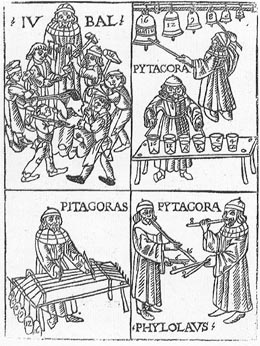 Welcome
to the home of Dante Rosati's
Welcome
to the home of Dante Rosati's
 Welcome
to the home of Dante Rosati's
Welcome
to the home of Dante Rosati's
Harmonic Series Guitar
Prime Guitar

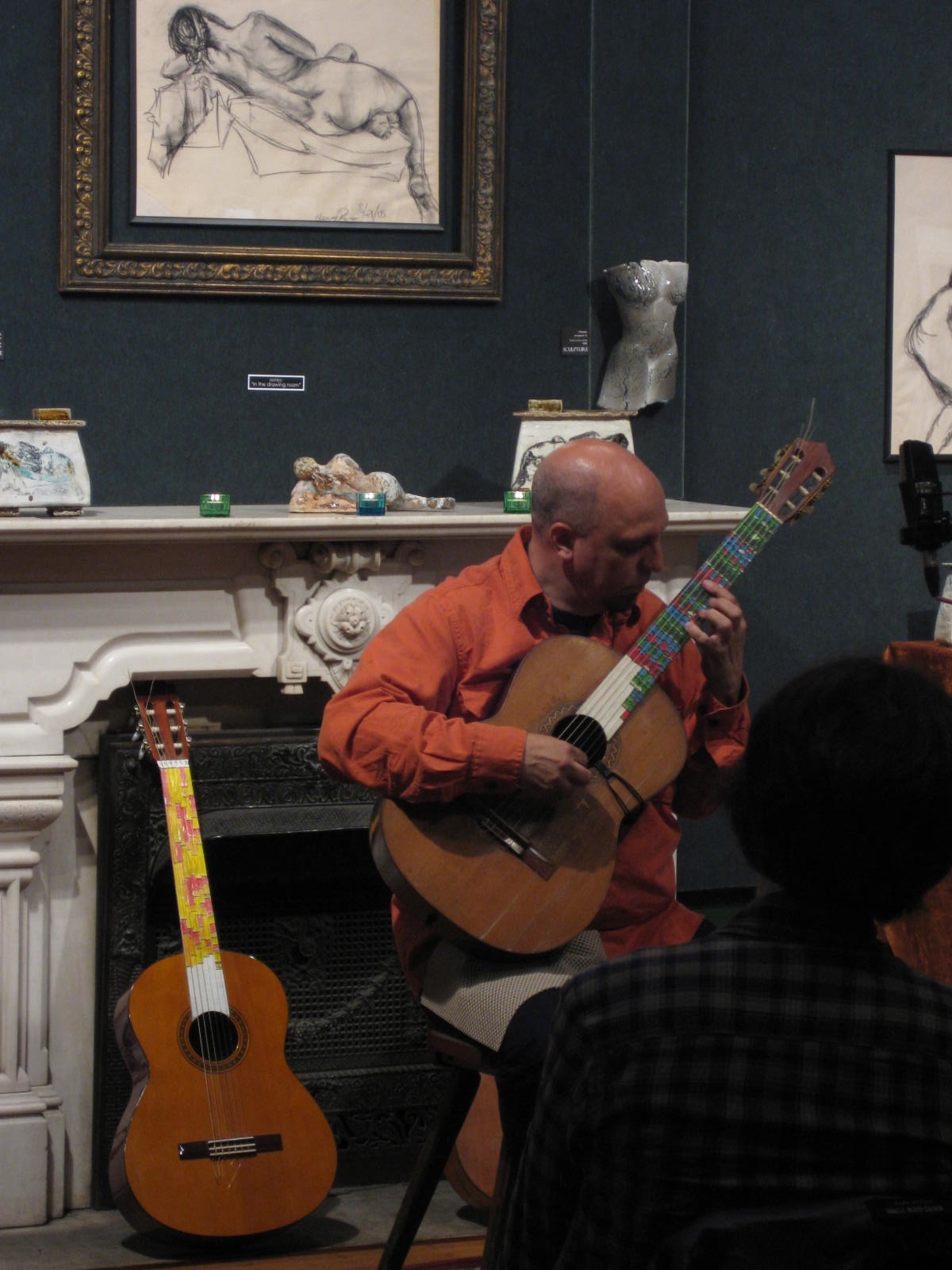
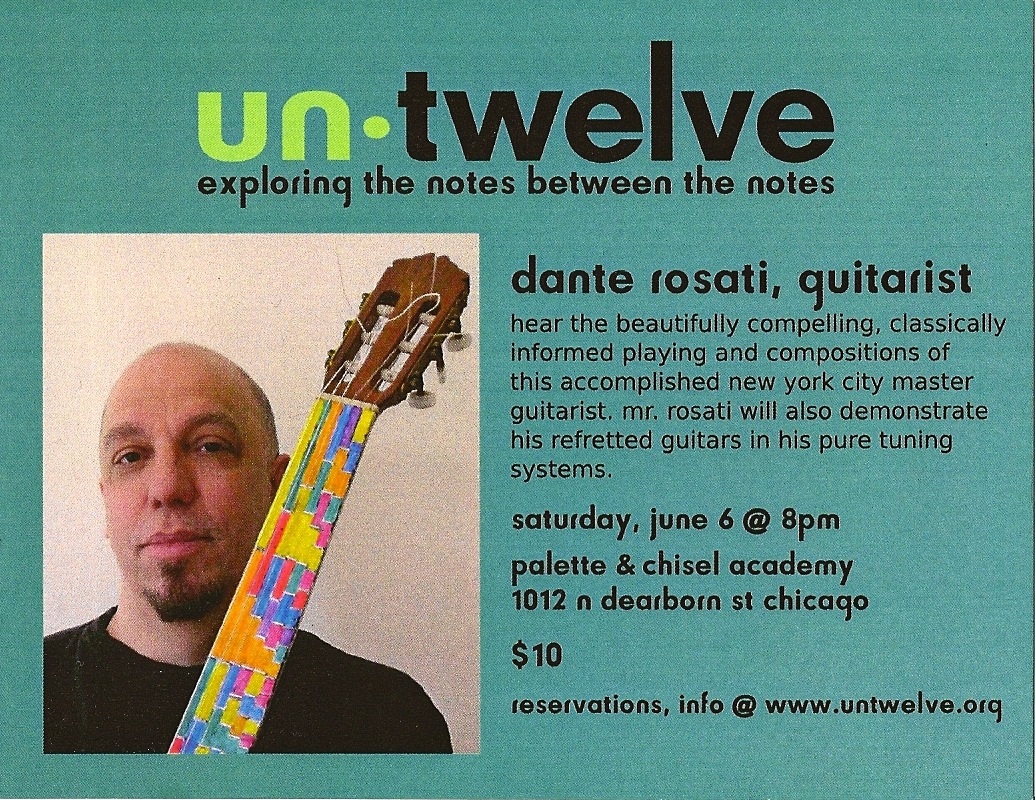
Chicago, 2009 concert at the Palette & Chisel Academy, sponsored by Untwelve.
The first guitar I refretted was the 21-tone Just Intonation guitar.
To read about how I adapted an old Ioannou guitar, why, and how the tuning was derived, go HERE.
Here's a close up of the neck:

The guitar is tuned in fifths and fourths: C-G-C-G-C-G, so if C is 1/1, the notes are as follows:
1/1 16/15 10/9 9/8 8/7 7/6 6/5 5/4 9/7 4/3 7/5 10/7 3/2 14/9 8/5 5/3 12/7 7/4 16/9 9/5 15/8
The colors have to do
with the prime limit of the interval: red for 2 and 3 limit, green for 5 limit and blue for 7 limit.
There is more about this in the article
linked to above.
Peira This is the first piece I wrote to explore this tuning. It is an ancient Greek word meaning "trying-out".
Statue of Alice This is a recorded improvisation, done after a visit to the statue of Alice in Wonderland in Central Park. She's sitting on a giant mushroom. Need I say more?
Arbor Low Arbor Low is the name of a prehistoric henge I visited in Derbyshire, England.
Here are the first two pages of a possible tablature notation for Arbor Low:
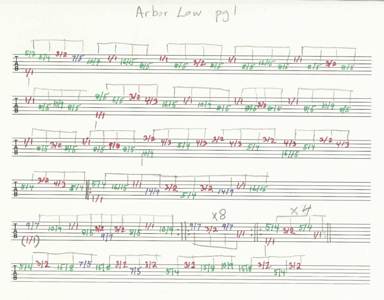
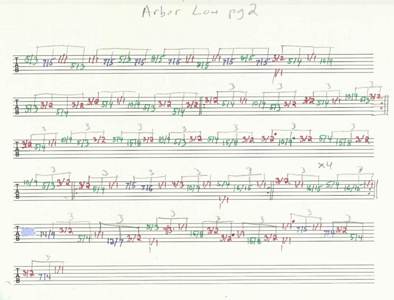
And here is a PDF of a typeset version of the same tablature: Arbor Low Tablature
Hernshead An excellent spot in Central Park for Dzogchen meditation
C-Squat Krustie Breakdown Urban Bluegrass in Just Intonation
The Harmonic Series Guitar

While thinking about various ways of deriving scales from the harmonic series, I wondered "Why derive a scale, why not just use the harmonic series itself?" This guitar is the result of that thought.
Due to the limited range of the guitar, it was not practical to begin with the lowest string tuned to the first partial: doing so would result in the lower half of the instrument's range consisting of just a few notes. By tuning the lowest string to the 4th partial, then the other strings can be tuned to partials 6,8,12,16, and 24, the same open-fifths tuning used on the 21-tone Just Intonation Guitar, and this gives a good spread and playable partials from 4 up to 48.
The color scheme is a little different from the 21-Tone Just Intonation guitar, since there are many more prime-limit families. I tried to follow a basic spectrum arrangement (the colors in the above photo are not very accurate, it makes the greens and blues look the same):
2 limit - red
3 limit - orange
5 limit - yellow
7 limit - green
11 & 13 limit - blue
17 limit - purple
19 and higher - violet
The Prime Guitar

The first guitar I refretted, (the 21-Tone Just Intonation Guitar), used a 21 note scale derived from the harmonic series, using pitches up to the 7 prime limit, and with the scale repeating throughout the range of the instrument. After that, I wanted a guitar that would enable me to play in the harmonic series without limit-ations, so I next refretted an instrument into the Harmonic Series Guitar. Being able to play partials like 11, 13, 17 and other higher primes was quite interesting, and I found myself wondering if an instrument could be designed that would play only higher prime partials.
The Prime Guitar is designed to play prime partials 17-199. The lowest string is tuned to the 17th partial of a series, and the successive strings are then tuned to partials 23, 37, 47, 67, and 89 to preserve the basic tonal spread of a standard set of guitar strings. Since every single note is a unique prime limit pitch, it was not practical to color code the frets in the same way as the previous guitars. On the other hand, it is very difficult to orient one's self on a neck with such irregular fret spacing without any color coding, so I settled on a simple alternating three color scheme that allows for easy visual spotting of where the frets are located.
Because the lowest partial is 17, there are no familiar lower prime limit intervals like octaves (2/1), fifths (3/2), thirds (5/4), etc. Nevertheless, some intervals between higher primes approximate the lower prime limit intervals (e.g. 61/31 is very close to an octave), without of course reproducing them exactly. This gives the guitar a unique sound that can be heard in this piece composed and recorded on this instrument:
(dedicated to Dorota Bartniczuk, who generously donated the guitar that was converted into the Prime Guitar)
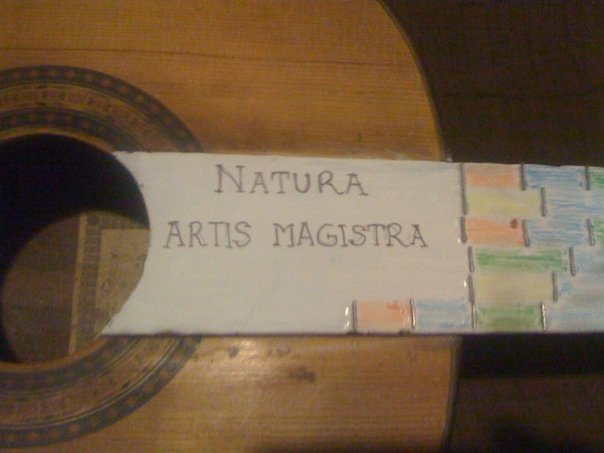
back to: